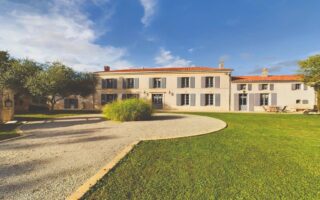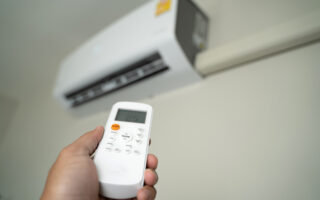Options for Heating your House in France
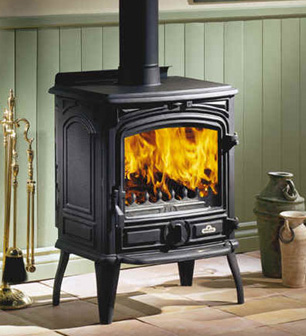
A wood burning stove could be a good choice
Back in the UK the typical family home has a central heating system with a boiler and radiators. The boiler is usually fired by gas or heating oil. Some, well insulated homes and apartments use electrical heating. In France, each of these options is available but they can be more expensive.
If you buy a stone house and it has not been completely refurbished and insulated, it will have relatively poor levels of insulation and cost correspondingly more to keep warm. Indeed, we have friends with stone houses that complain about the cost and come round to visit in the winter dressed for the arctic. Our house is only 15 years old and provides much better insulation, our guests are forced to strip off once they cross the threshold!
Being used to a UK climate people often don’t realise what winter is like in southwest France. We often see several weeks when the temperature doesn’t get above freezing and continuous temperatures of –10 deg C are not unusual. Heating is a serious business.
Central heating systems have the great advantages that they are clean and simple to operate, can be pre-programmed and may be the only option if the house is not occupied for all of the day. Wood fired heating on the other hand requires a large amount of storage space, more regular maintenance and the ongoing task of feeding wood into the stove. Wood might be cheaper but it is not always the most practical solution. This point is well illustrated by our very own wood supplier – he has hundreds of hectares of woods and keeps up a steady supply to many of the homes in the area. But, how does he heat his own home? With oil fired central heating because even if the wood is free it would mean him coming home at night to a cold house!
Fuel Price Comparison
Here are some figures from Energie Plus et Commerce comparing the relative costs of different energy sources:
| Energy Source |
Price €
|
Unit
|
Price/kWh
|
Relative Cost
|
|
|---|---|---|---|---|---|
| Wood |
60
|
Stére (1m3)
|
0.026
|
1
|
450kg, 50cm logs |
| Natural Gas |
0.056
|
kWh
|
0.056
|
2.2
|
Tarif B1 |
| Heating Oil |
0.62
|
litre
|
0.062
|
2.4
|
2,000l delivery |
| Propane Gas |
1,240
|
Tonne
|
0.097
|
3.7
|
1,000 kg delivery |
| Paraffin |
30
|
20l
|
0.16
|
6.2
|
20l container |
| Electricity |
0.112
|
kWh
|
0.112
|
4.3
|
kWh |
From this, we can see that wood is far and away the cheapest option, assuming a central wood burning stove would be suitable for your house. Our French neighbours have a relatively new house, but the only form of heating is a wood burning stove placed centrally in the house that manages to heat all of the main rooms and the bedrooms. Houses with bedrooms a long way from the heat source or with very high ceilings may not be suitable for such a system.
Required Power Output
This table summarises the required power output of a stove for different floor areas of accommodation. This assumes a ceiling height of 2.5m. Note that the quoted power or Puissance is often quoted on appliances as the Puissance Nominale – this is not the same as the maximum power which is a higher figure.
| Nominal Power kW |
Area m2
Non-insulated House |
Area m2
Well-insulated House |
|---|---|---|
| 4 |
20
|
55
|
| 6 |
30
|
80
|
| 8 |
40
|
110
|
| 10 |
50
|
135
|
| 12 |
60
|
160
|
What About An Open Fire?
Most houses in France will have an open fire and it is nice to be able to burn a few logs to create a homely atmosphere and add some additional heat. However, one should beware of using an open fire as a serious source of heat as it is extremely inefficient.
An open fire can have an efficiency of up to 10%. To put this into perspective, maintaining an output of 10kW for one hour would require 20kg of wood. This lack of conversion efficiency makes wood an expensive option as a main source of heat. One study in the US actually found that badly designed open fireplaces could actually have a negative efficiency – lighting the fire made the room get colder due to induced draughts of cold air from outside the room! Installing a wood burning stove or poele a bois in the open fireplace will raise the conversion efficiency to about 75%, by controlling the airflow to the wood and allowing the heat energy to be stored in the metal of the stove and gradually released into the room.
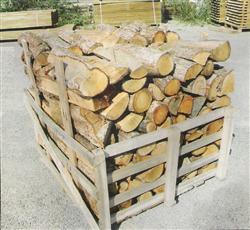 What Type of Wood?
What Type of Wood?
Different types of wood have different calorific values and it is worth checking with your supplier the type of wood and the age. In the Quercy, not surprisingly as the name was reputed to be derived from the Latin quercus for Oak, the wood supply is mainly the scrub oak that still covers the landscape. Freshly cut wood contains up to 75% water and needs to be thoroughly dried before being used on a stove. It is recommended that the wood is aged for 18-24 months in a well ventilated stack before being burnt. In reality a lot of wood is burnt at 12 months old with the result that more tar deposits are produced. In this case, a watchful eye should be kept on chimney deposits and it may be necessary to have the chimney swept more than once per year to avoid any risk of the dreaded chimney fire.
The relative calorific values of woods available in France are as follows:
Charme 100
Chêene – Oak 99
Frène 92
Érable 91
Bouleau 89
Orme 84
Hêtre 80
Saule 71
Sapin 70
Aulne 67
Tilleul 57
Peuplier 50
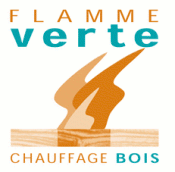 What Type of Stove?
What Type of Stove?
There are a huge variety of stoves to choose from and from late summer onwards the brico stores are full of them. As a general rule, you get what you pay for. The simplest stoves are assembled from bent and welded steel plates, have an ash pan and a simple air regulator. These will serve the purpose well for an occasionally used fire but don’t have any additional features and are not the most attractive.
Other features which come with the more expensive stoves include:
Cast Iron body – a much heavier stove giving much longer heat retention, but taking correspondingly longer to warm up.
Fire bricks – added to the interior to further aid heat retention
Secondary air – an additional air inlet higher up the stove to increase combustion efficiency and reduce tar deposits
Clear glass- a system of controlled air flow to keep smoke deposits off the glass front of the stove
Fan assisted – an electrically powered fan to increase the heat output into the room and provide more heat at ground level
Installation
There are strict regulations concerning the installation of wood burning stoves and their chimneys in particular. It is recommended that, at the very least, you get an installation quote from the supplier of the stove to fully appreciate what is involved. If the stove pipe passes through a wooden floor, the regulations require the use of double walled, insulated stainless steel pipe. In some cases the cost of the stove pipe and fittings can equal the cost of the stove itself.
TVA and Crédit d’Impôt
If you buy the stove and install it yourself you will pay full TVA of 19.6% and (as far as I know) be unable to claim a tax credit.
If the stove supplier installs the stove, TVA is only charged at 5.5% and you can get a tax credit for 50% of the cost of the stove. This only applies if the stove is being installed in your main residence residence principale and you are a French taxpayer. In practice you will need to pay all of the costs (with TVA at 5.5%) and claim the tax credit against your next tax submission. The stove supplier should provide the necessary paperwork.
Note that this tax credit only applies to stoves that have been awarded th Charte qualité flame verte. To achieve this the stove must have an efficiency of more than 70% and CO emissions of less than 0.6%. Beware that not all stoves achieve this – especially the cheaper ones.
Keep warm!
© Tim Atkins
<!–
if (!document.phpAds_used) document.phpAds_used = ‘,’;
phpAds_random = new String (Math.random()); phpAds_random = phpAds_random.substring(2,11);
document.write (“”);
//–>
Share to: Facebook Twitter LinkedIn Email
More in businesses, chateau, family, heating, holiday accommodation, summer, tax
Leave a reply
Your email address will not be published. Required fields are marked *

